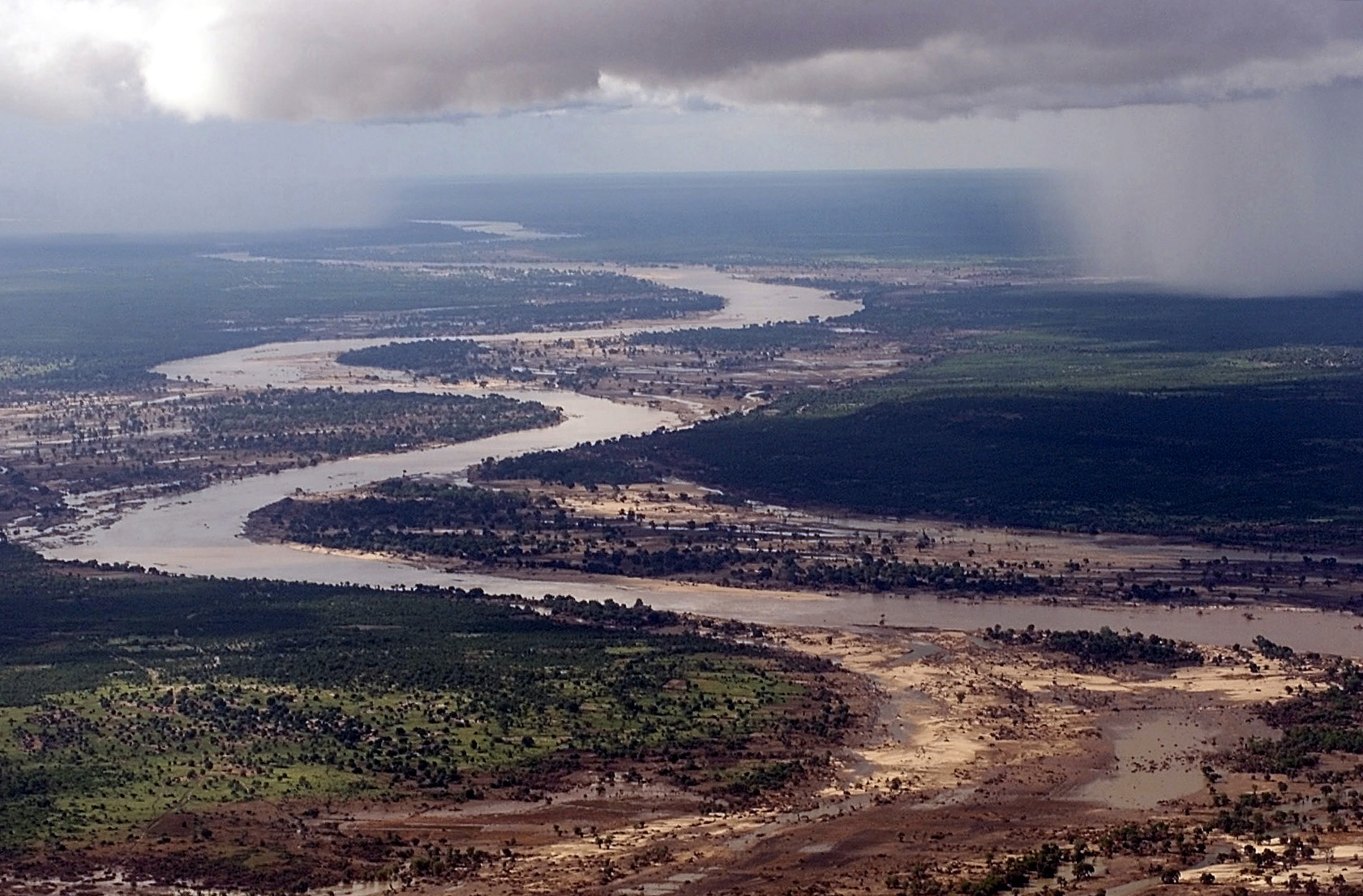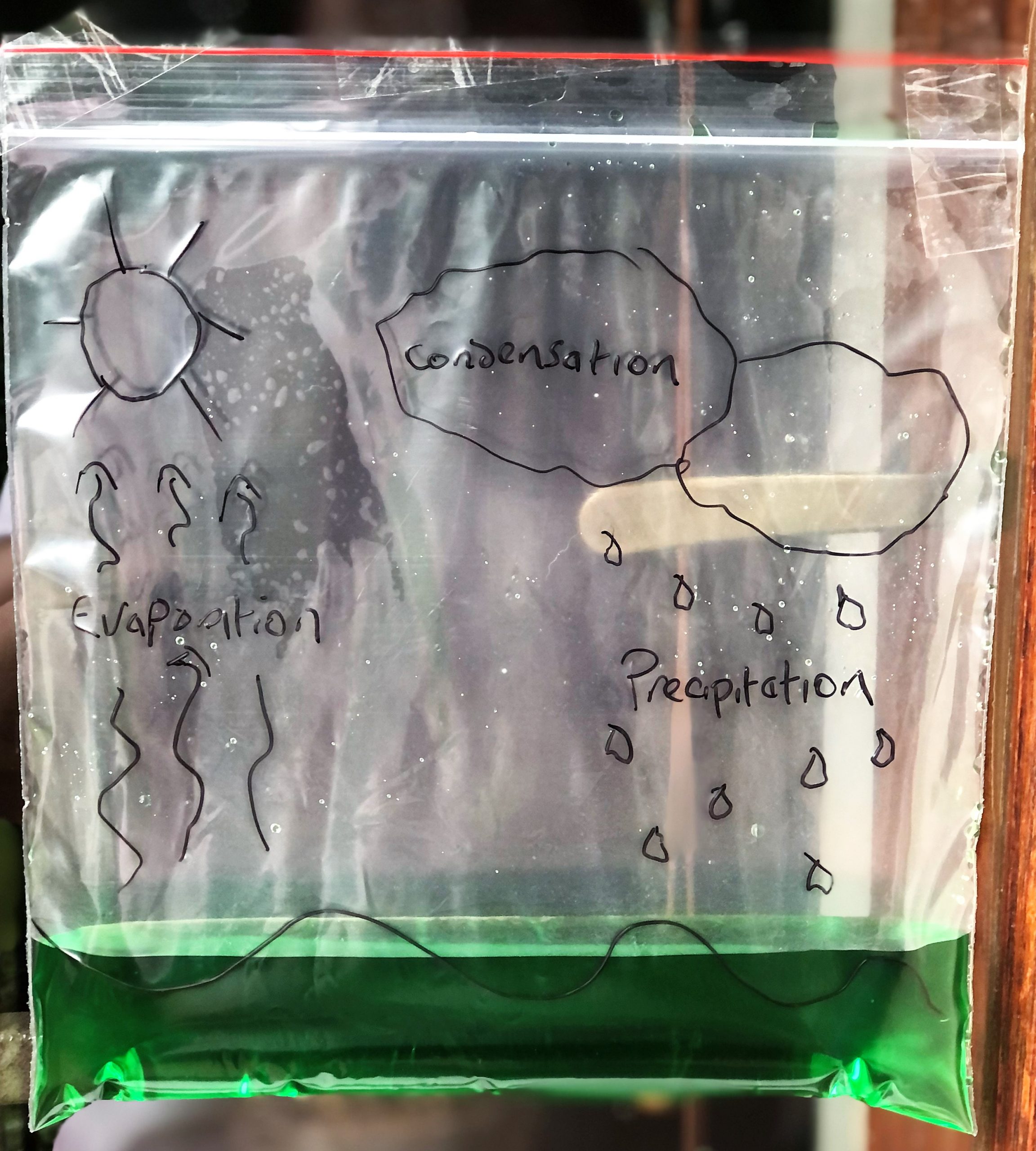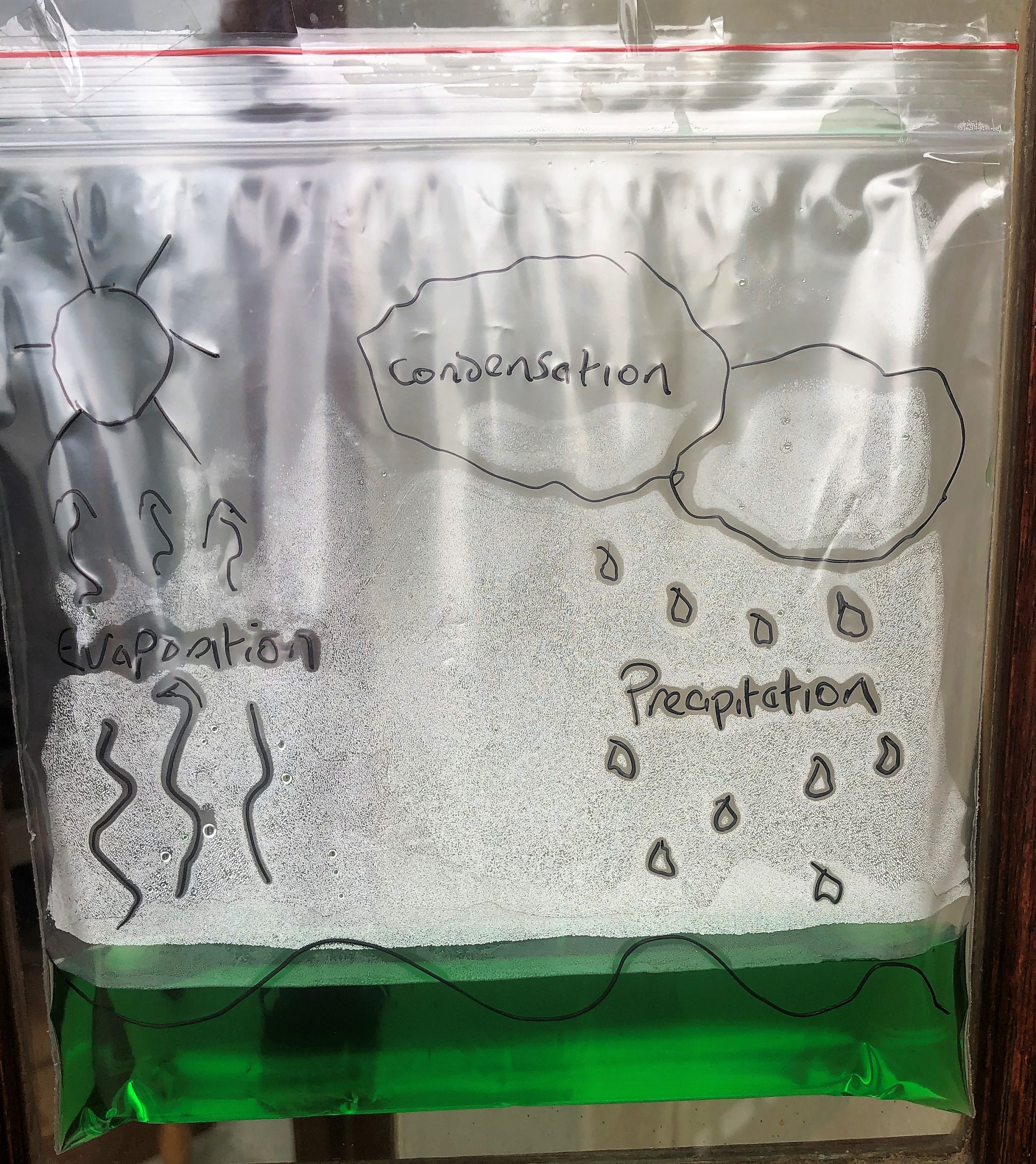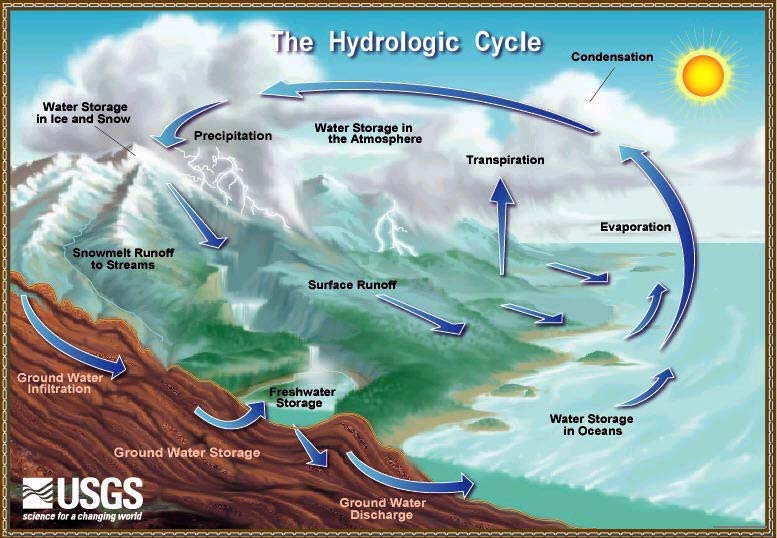Chemical systems and industry: Identify and describe the impact of scientific knowledge of the hydrosphere on the quality of human, environmental, and socio-economic development
Unit 1: The hydrosphere
Emma Harrage
Unit outcomes
By the end of this unit you will be able to:
- Describe the water cycle.
- Understand the physical changes of state within the water cycle.
- Understand the energy transfers within the water cycle.
- Understand the macroscopic properties of water, ice and water vapour in relation to their particle structure.
What you should know
Before you start this unit, make sure you can:
- Identify and describe the phases of matter (physical property of matter), as covered in Subject outcome 5.1, Unit 1.
- Distinguish between the phases of matter in terms of energy, shape, and volume, as covered in Subject outcome 5.1, Unit 1.
- Describe heat and heat transfer (see thermal conductors), as covered in Subject outcome 6.1, Unit 3.
- Define and calculate heat capacity and specific heat, as covered in Subject outcome 6.1, Unit 3.
Introduction
As far as we know, the Earth we live on is the only planet that can support life. The Earth is just the right distance from the sun to have temperatures that are suitable for life to exist. Also, the Earth’s atmosphere has exactly the right types of gases in the right amounts for life to survive. Our planet also has water on its surface, which is something unique. In fact, Earth is often called the “Blue Planet” because most of it is covered in water. This water is made up of freshwater in rivers and lakes, the saltwater of the oceans and estuaries, groundwater, and water vapour. Together, all these water bodies are called the .
The hydrosphere
A hydrosphere is the total amount of water on a planet. The hydrosphere includes water that is on the surface of the planet, underground, and in the air. A planet’s hydrosphere can be liquid, vapour, or ice.

On Earth, liquid water exists on the surface in the form of oceans, lakes, and rivers. It also exists below ground; as groundwater in wells and aquifers. Water vapour is most visible as clouds and fog. The frozen part of Earth’s hydrosphere is made of ice: glaciers, ice caps and icebergs. The frozen part of the hydrosphere has its own name, the .
The total amount of water on Earth is about [latex]\scriptsize 1386[/latex] million cubic kilometres, and the hydrosphere’s composition in terms of percentage of water is as follows:
| Oceans | [latex]\scriptsize 97.6\%[/latex] |
| Saline lakes and inland seas | [latex]\scriptsize 0.008\%[/latex] |
| Glaciers and ice caps | [latex]\scriptsize 1.9\%[/latex] |
| Groundwater | [latex]\scriptsize 0.5\%[/latex] |
| Soil moisture | [latex]\scriptsize 0.01\%[/latex] |
| Lakes | [latex]\scriptsize 0.009\%[/latex] |
| Freshwater rivers | [latex]\scriptsize 0.0001\%[/latex] |
| Atmosphere | [latex]\scriptsize 0.0009\%[/latex] |
About 68.7% of all freshwater exists in the form of permanent snow. This exists in the Arctic and Antarctic regions, as well as other mountain glaciers. The amount of water on the Earth’s surface does not change over time so the amount of water available on the Earth today is the same as it was when dinosaurs were roaming the Earth hundreds of millions of years ago.
Water moves through the hydrosphere in a cycle. Water collects in clouds, then falls to Earth in the form of rain or snow. This water collects in rivers, lakes, and oceans. Then it evaporates into the atmosphere to start the cycle all over again. This is called the water cycle.
It is important to realise that the hydrosphere is not an isolated system, it rather interacts with other global systems, including the , , and . These interactions are sometimes known collectively as the water cycle.
The atmosphere
The atmosphere is a collection of gases and consists of 78% nitrogen, 21% oxygen, 1% water vapour, and tiny amounts of other trace gases such as argon, and carbon monoxide. All these gases combine to absorb ultraviolet radiation from the sun and warm the planet’s surface through heat retention.
The cycle of water moving through the atmosphere and the energy changes that accompany it, is what drives weather patterns on Earth.
The lithosphere
In the lithosphere (the ocean and continental crust at the Earth’s surface), water is an important weathering agent, which means that it helps to break rock down into rock fragments and then soil. These fragments may then be transported by water to another place, where they are deposited. These two processes (weathering and the transporting of fragments) are collectively called erosion. Erosion helps to shape the Earth’s surface. For example, you can see this in rivers. In the upper streams, rocks are eroded, and sediments are transported down the river and deposited on the wide flood plains lower down.
The biosphere
In the biosphere, land plants absorb water through their roots and then transport this through their vascular (transport) system to stems and leaves. This water is needed in photosynthesis, the food production process in plants. Transpiration (evaporation of water from the leaf surface) then returns water back to the atmosphere.
Note
For a further explanation on the hydrosphere, watch this video called Earth’s Interconnected Cycles by Lincoln Learning Solutions (Duration: 4.12).
The importance of the hydrosphere
The hydrosphere does not only include the collected amount of water on Earth, it also enables a huge variety of organisms to survive on the Earth.
- A component of living cells: Each cell in a living organism is composed of at least 75% water. This supports the normal functioning of the cell. Most of the chemical reactions that occur in living organisms involve materials that are dissolved in water. No cell would survive or be able to carry out its normal functions without water.
- Habitat for many life forms: The hydrosphere provides an important place for a wide range of plants and animals to live. Many nutrients such as nitrate, nitrite, and ammonium ions, as well as gases such as carbon dioxide and oxygen are dissolved in water. These compounds play an integral role in the existence of life in water.
- Climate regulation: One of water’s exceptional features is its high . Namely, water takes not only a long time to heat up but also a long time to cool down. It plays a significant role in regulating temperatures on Earth, ensuring temperatures remain within a range that is suitable for the existence of life. Ocean currents also play a critical role in heat dispersion.
- Existence of our atmosphere: The hydrosphere significantly contributes to the existence of our atmosphere in its present form. When the Earth was formed it had only a very thin atmosphere. This atmosphere was packed with helium and hydrogen. The gases helium and hydrogen were later ejected from the atmosphere, and the gases and water vapour produced as the Earth cooled formed our current atmosphere. Volcanoes also released other gases and water vapour, which entered the atmosphere. This process is estimated to have occurred about 400 million years ago.
- Human needs: Humans benefit from the hydrosphere in numerous ways. Besides for drinking, water is used for domestic purposes like cooking and cleaning. Water can also be used for transportation, agriculture, and to generate electricity through hydropower.

Figure 2: The Limpopo river valley .
On a bigger scale, river valleys in mountains have been carved out by the action of water, and cliffs and caves on rocky beach coastlines are also the result of weathering and erosion by water. The processes of weathering and erosion also increase the content of dissolved minerals in the water. These dissolved minerals are important for the plants and animals that live in the water.
Activity 1: Make your own water cycle
Time required: 15 minutes
What you need:
- a sealable, transparent sandwich bag or a sealable transparent jar
- food colouring (optional)
- a permanent marker
- sticky tape
- water
- a teaspoon

What to do:
- Put some water in a container and add a teaspoon of blue food colouring. Stir well.
- Take the sealable sandwich bag and draw a sun, some clouds, and rain. Label the areas where condensation, precipitation, evaporation, will occur.
- Now, pour the blue water into the bag and seal it.
- Attach the bag to a sunny window with the help of the tape.
- Leave the bag on the window for a while and examine what changes occur when the sun begins to heat up the water.
What did you find:

The water in the bag is warmed up in the sun. That water transforms into a gas through the process of evaporation. In nature, evaporated water vapour goes into the atmosphere, but in our bag, it has nowhere to go, so it ends up settling on the sides of the bag, and rolling back into a liquid as condensation. That evaporated water then slides back into the pool of water below as “rain”.
The water cycle
The hydrosphere interacts with the atmosphere and the lithosphere primarily through the water cycle. The water cycle or hydrologic cycle is driven by the energy from the sun. The water cycle goes through four main steps: , , , and /.
Plants release water vapour into the atmosphere in two ways. One way they release water vapour into the atmosphere is through . The other way is through .

Water on the Earth’s surface changes from liquid to vapour (gas) through evaporation as it absorbs energy from the sun.
When it gets to the atmosphere, the water vapour cools as it loses energy, and accumulates into water droplets, which become clouds. The process is called condensation.
Eventually, the water in the clouds falls back to Earth in the form of precipitation, which includes rain, hail, sleet, and snow. Some of that water infiltrates or sinks into the land and becomes ground water, the rest runs off the land into rivers, lakes and/or the sea.
Note
For a further explanation on the water cycle, watch this video called The Water Cycle by the National Science Foundation (Duration: 6.46).
Summary
In this unit you have learnt the following:
- The hydrosphere includes all the water that is on Earth. Sources of water include freshwater (e.g. rivers, lakes), saltwater (e.g. oceans), groundwater (e.g. boreholes) and water vapour. Ice (e.g. glaciers) is also part of the hydrosphere.
- The hydrosphere interacts with other global systems, including the atmosphere, lithosphere and biosphere.
- The hydrosphere has a number of important functions. Water is a part of all living cells, it provides a habitat for many living organisms, it helps to regulate climate and it is used by humans for domestic, industrial and other uses.
Unit 1: Assessment
- How much of the Earth’s water is freshwater?
- 50 %
- 3 %
- 97 %
- 93 %
- Which best describes most of Earth’s water?
- Freshwater
- Saltwater
- Drinking water
- What follows evaporation during the water cycle?
- Water evaporates into water vapour.
- Water vapour condenses and forms a cloud.
- Water precipitates to the ground.
- Water runs down into the hydrosphere.
- The clouds are formed because of:
- surface water
- evaporation
- condensation
- precipitation
- What is the hydrosphere? How does it interact with other global systems?
- Using the diagram below, complete the table by adding the name of the process next to the correct letter.

A B C D E F - With reference to the changes of state which occur in the water cycle, state whether energy is released or absorbed during the following changes:
Physical change Energy released or absorbed? Evaporation Condensation
The full solutions are at the end of the unit.
Unit 1: Solutions
Unit 1: Assessment
- b
- b
- b
- c
- The hydrosphere is all the water on the Earth’s surface. All four systems, the atmosphere, biosphere, lithosphere, and the hydrosphere interact to form the living conditions need for organisms to survive on the Earth.
- .
A Condensation B Precipitation C Run off D Infiltration/Percolation E Ground water discharge F Evaporation - .
Physical change Energy released or absorbed? Evaporation absorbed Condensation released
Media Attributions
- Fig 1 © NASA is licensed under a CC0 (Creative Commons Zero) license
- QR_Code_PSL2SO71U1_1
- ATLAS RESPONSE © Cary Humphries is licensed under a CC0 (Creative Commons Zero) license
- Fig 3 © DHET is licensed under a CC BY (Attribution) license
- Fig 4 © DHET is licensed under a CC BY (Attribution) license
- Fig 5 © USGS is licensed under a Public Domain license
- QR_Code_PSL2SO71U1_2
- Fig 7 © DHET is licensed under a CC BY (Attribution) license
all the water on the Earth's surface, such as in rivers, lakes and seas
the part of the Earth's surface characterised by the presence of frozen water; it is made up of mountain glaciers and continental ice sheets, seasonal snow and ice cover on land, and sea ice
the mixture of gases that make up air
the rigid, rocky outer layer of the Earth, consisting of the crust and the solid outermost layer of the upper mantle
the region or part of the Erath’s surface and atmosphere occupied by living organisms
the amount of heat required to change the heat content of exactly 1 kilogram of a material by exactly 1 °C
change of phase from liquid to gas when heated
when a liquid cools and changes from a gas to a liquid
rain, snow, sleet, or hail that falls to the ground
water soaking into the ground by filtering through the soil
water soaking into the ground by filtering through the soil
the process by which organisms convert glucose and oxygen into water vapour and carbon dioxide to release energy
the releasing of water vapour through the leaf of a plant


